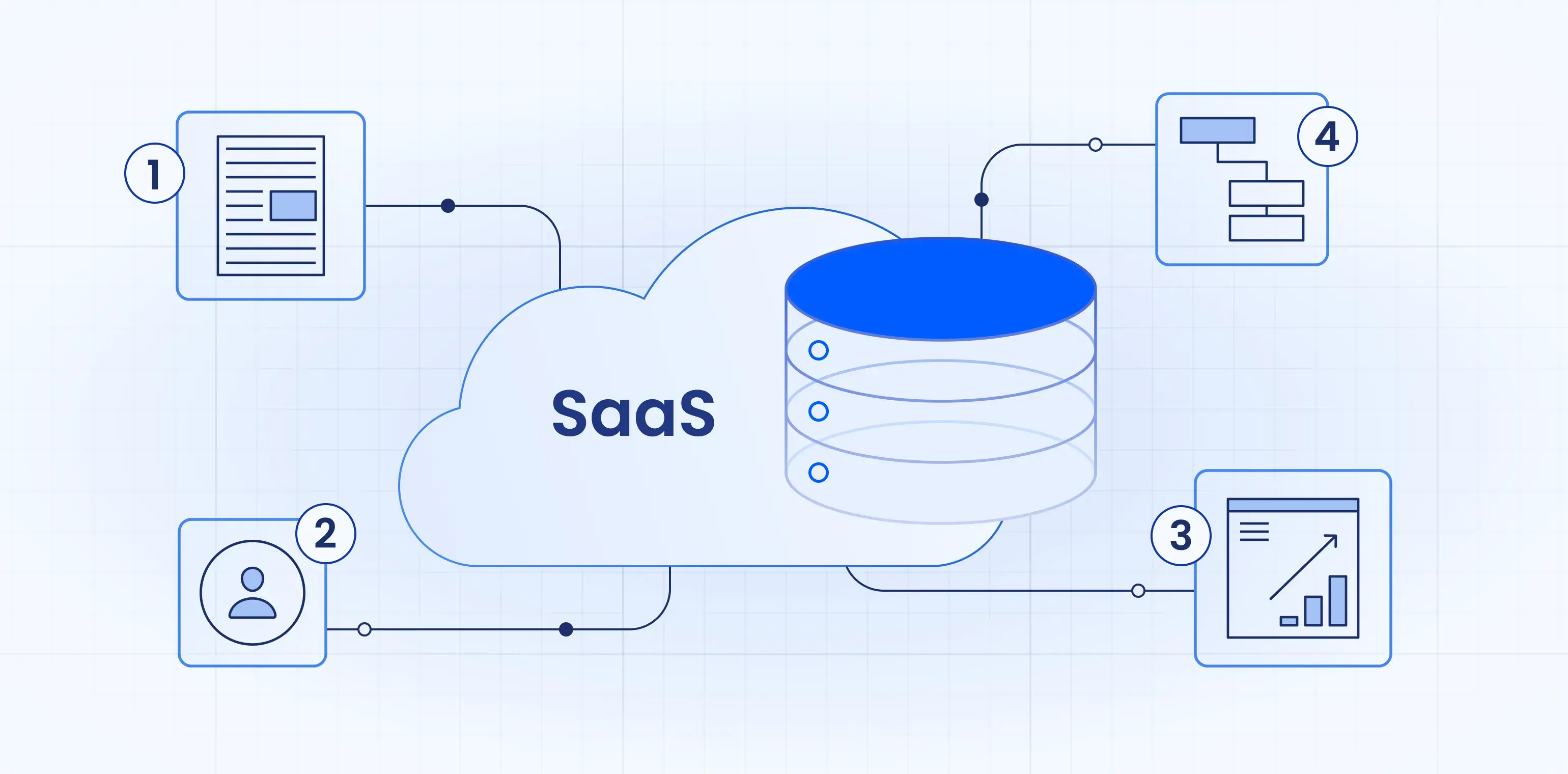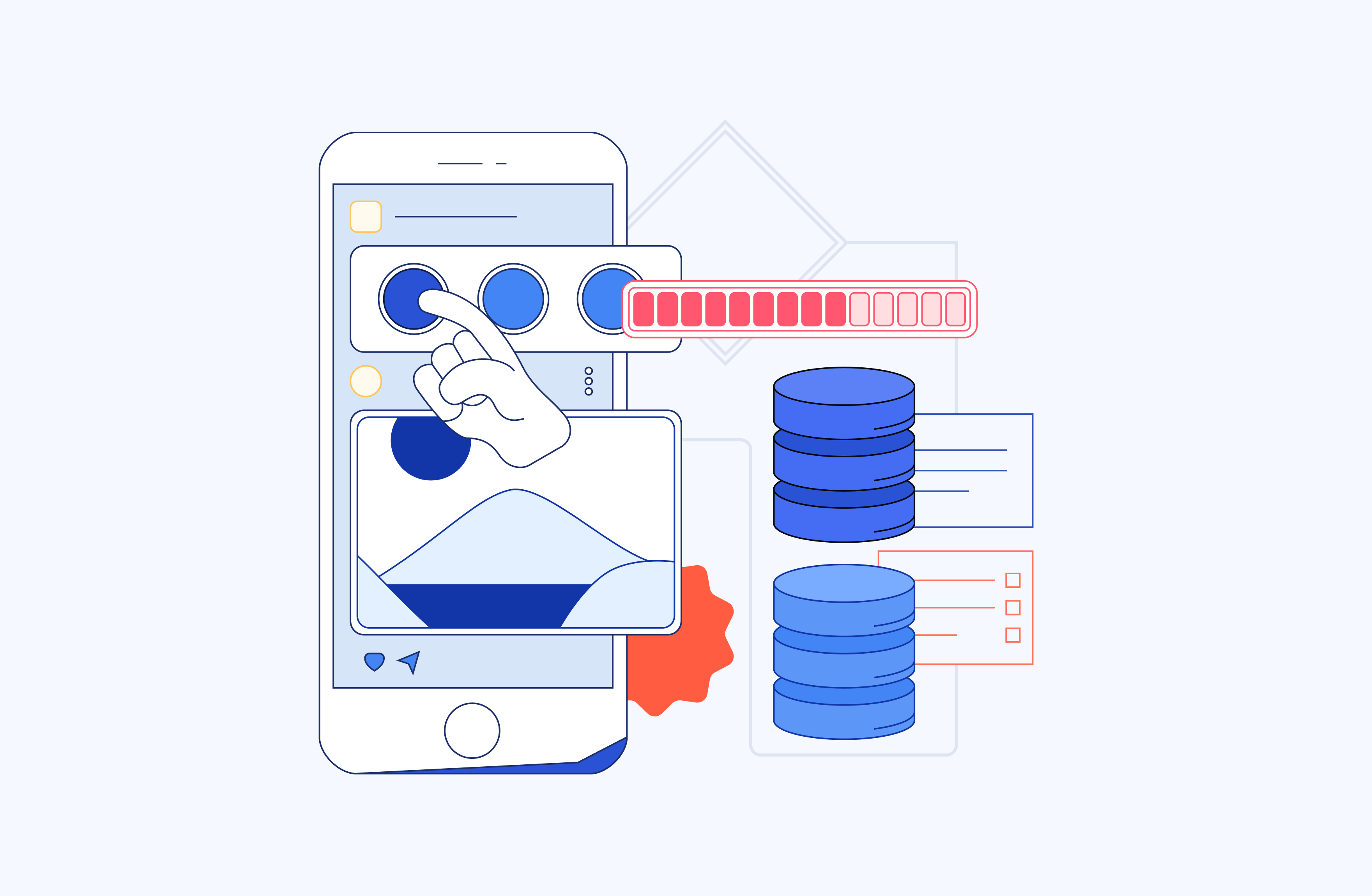How to Reduce Your Carbon Footprint in the Digital World
The digital world has revolutionized the way we live and do business. But with all the amazing things technology offers, it also comes with a high cost – a large carbon footprint.
It's estimated that data centers and digital devices account for 2% of global greenhouse gas emissions. That may not seem like a lot, but it's the equivalent of the emissions due to aviation.
In this post, we'll share some tips on how you can reduce your carbon footprint in the digital world. From simple things like turning off your device when you're not using it, to making more environmentally friendly choices when it comes to technology - it's in your power to contribute to the protection of the environment and allow your company to benefit from it.
Data centers and blockchain farms are major creators of carbon footprint
Technology development leads to the rapid digitalization of everyday activities and the accumulation of enormous amounts of data. According to Statista, there are currently 87 zettabytes of data in the entire digital universe. For comparison, five years ago, this figure was three times lower, and in three years, it is expected to be twice as high.
The growing data volume requires augmented storage space. Given that companies are not interested in raw data, they would look for data centers with powerful processing, computing, and analytics tools. Such data centers work around the clock and consume large quantities of electricity. So, the more information companies produce, the bigger data storage they use, and the greater carbon footprint they generate.
The rise of Blockchain has created another massive source of electricity consumption. In the process of mining, many computers take part in computation. As a result, they consume large amounts of electricity and create a huge carbon footprint.
According to the Bitcoin Energy Consumption Index, annual Bitcoin mining releases an amount of CO2 equivalent to that produced by the whole of New Zealand. Considering that Bitcoin is one of 12000 cryptocurrencies and 1000 blockchains currently available, their harmful impact on the environment is hard to overestimate.
How IT companies reduce their carbon emission
Today, there is hardly a business that does not harm the environment. Tech companies grow and, as they do, the carbon emission due to their expansion normally increases. Fortunately, many organizations understand the seriousness of the problem and are actively applying antipollution measures. According to a recent study, many tech corporations have succeeded in adopting technologies for reducing digital carbon footprint. However, it’s too early to talk about the effectiveness of the world environmental campaign, because so many companies release tons of CO2 into the atmosphere daily.
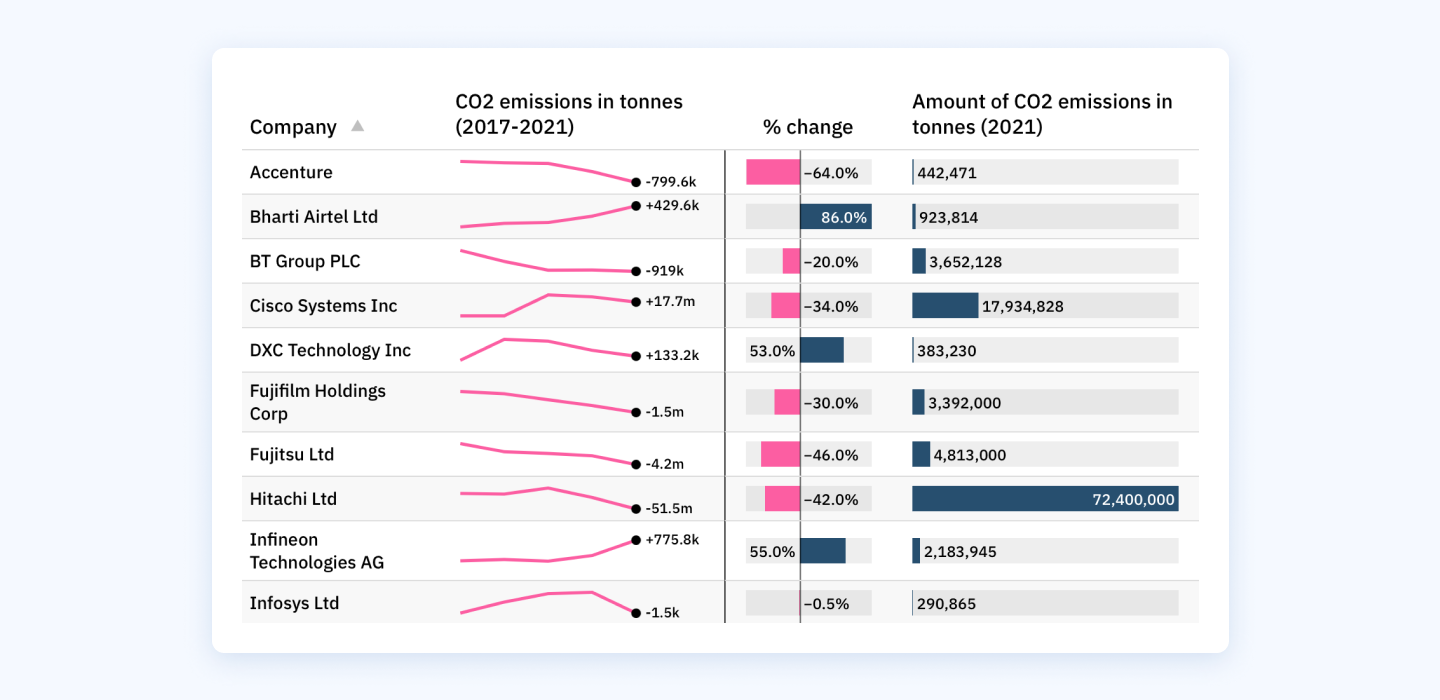
The convenience and affordability of the cloud has inspired many businesses to refuse on-prem infrastructure. However, the growing data centers of cloud providers have created the threat of a large carbon footprint and prompted companies to invest in GreenTech solutions. Amazon is one such company. Currently, it has a long-term commitment to using 100% renewable energy and runs numerous renewable energy projects across the globe.
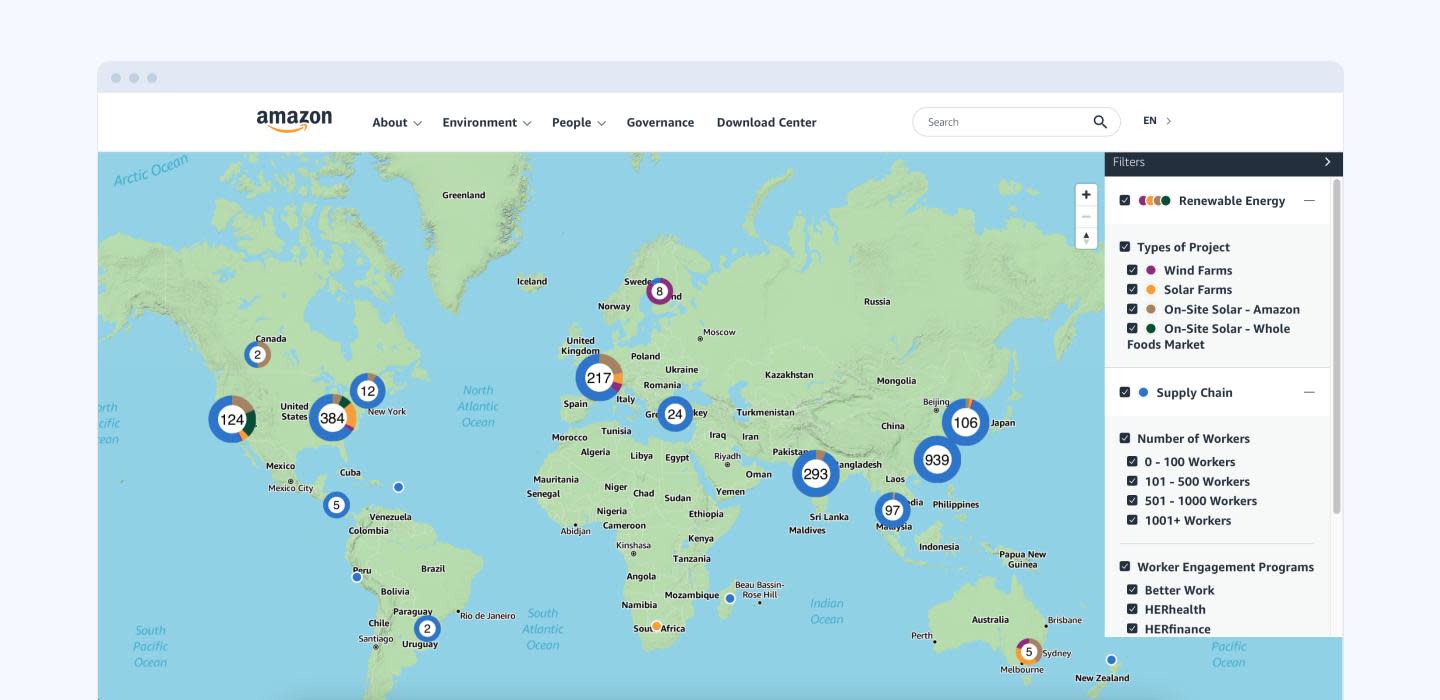
There are many more case studies of tech companies that have had success in reducing their carbon footprint.
For example, Facebook has introduced a number of sustainability initiatives to reduce its energy consumption, including data center consolidation, using recycled water, and using server racks that are more energy-efficient.
Google has also made several changes to reduce its carbon footprint, such as using renewable energy sources and investing in wind farms.
HP has revamped its production flow to make every item completely recyclable.
And Samsung is updating its product designs to cut waste and now uses eco-friendly packaging instead of plastic bags.
Benefits of carbon footprint reduction in IT
There are many benefits from adopting cleantech technologies and reducing your carbon footprint during the software development process. Not only is it good for the environment, but it can also help you save money and improve your business efficiency.
Here are some of the key advantages of going green in IT:
1. You'll use less energy, which will save you money on your electricity bill
2. Your computers will run faster and smoother, as they won't be bogged down by extra data and processes
3. You'll be preparing your business for the future as we move towards a low-carbon economy
4. You'll be less reliant on fossil fuels, helping to reduce your carbon emissions and mitigate climate change
5. You'll be setting an example for other businesses and helping to reduce global carbon emissions
Wanna make the world a better place? Take these first steps then contact us for further suggestions.
If you want to join the ranks of eco-friendly tech companies, you should first audit your digital activities and identify where you can make changes. Here are a few tips to help you get started:
Evaluate your energy consumption. How much electricity does your company use to run its servers? You can find this information on your monthly energy statement. If the figure turns out to be unreasonably large, consider changing the server provider.
Audit the equipment you use. Are these the most energy-efficient models available? Do you use them properly? You can find out by checking the Energy Star rating of your devices. Also, you can get advice on which equipment is best to use to reduce your carbon footprint by consulting with expert hardware and software developers.
Revise your data storage practices. Do you need to store all that data? Could you streamline or delete some files? Are you backing up your data redundantly? If you don't have a clear data management strategy, consider adding a DataOps engineer to your team.
Follow best practices for code creation. The faster the application loads to the user, the more economical it is in relation to electricity consumption. You can use the Website Carbon Calculator or WebKit to measure your app's power usage.
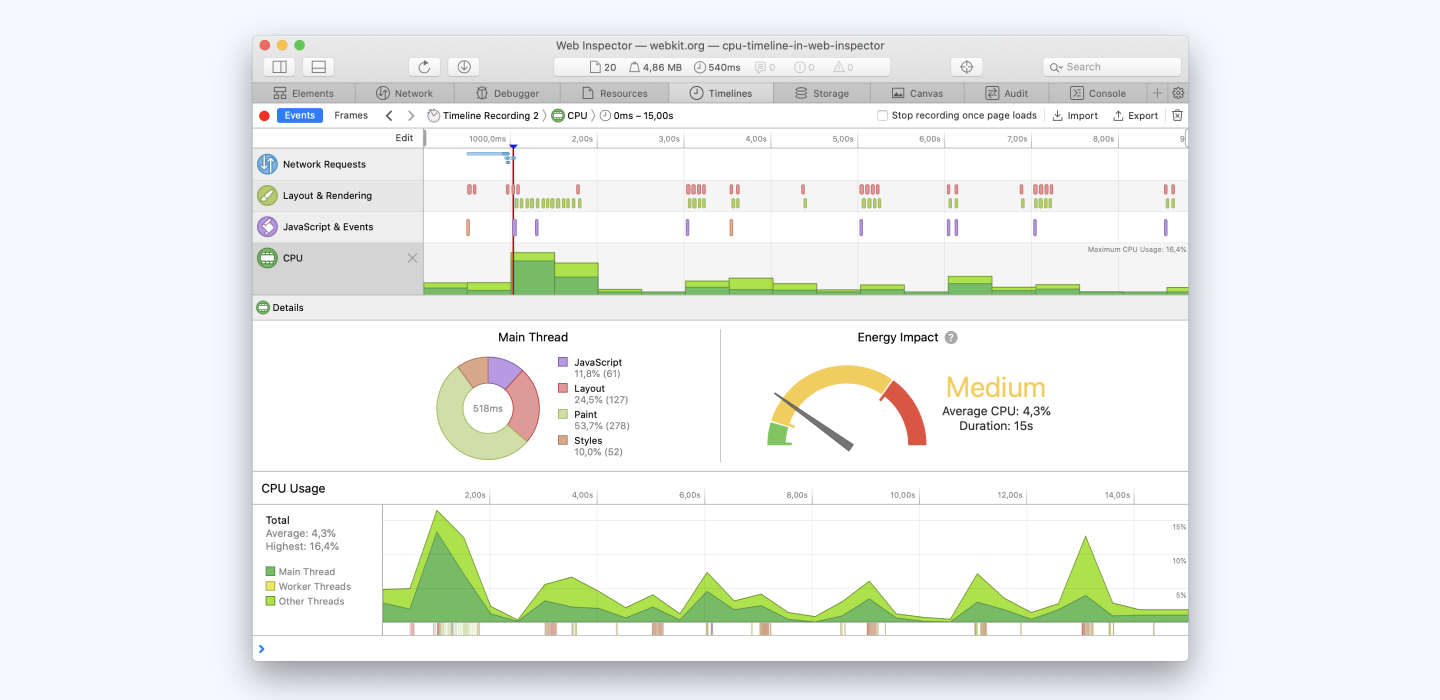
Optimize cooperation culture. Do you often fly to meet foreign partners? Are you having obligatory in-person meetings or insist that employees work from the office? If you answered “yes” to all three questions, then you are harming not only the environment but also your business. Adopt remote communication tools via theInternet; this will reduce the carbon footprint of your organization and significantly cut operational costs.
Opt for paperless communication. Do you still have stacks of papers in your office? If so, it's time to transfer your document flow into digital format. Encourage employees to use electronic signatures and store documents in virtual storage, rather than on shelves. It will help you join other GreenTech technologies and become an eco-friendly enterprise.
Participate in consolidated shipping. Whether you send or receive goods, consider using consolidated shipping in your supply chain to reduce your carbon footprint. This will not only contribute to environmental preservation but will also cut shipping costs and reduce the chance of damage.
Advocate for sustainable practices within your organization. Order recycled or sustainable materials for printing and packaging, use energy-efficient light bulbs in the office, shut down computers and printers when they're not in use, and support recycling initiatives.
Conclusion
There are many ways for tech companies to reduce their carbon footprint and make their business more eco-friendly. By making small changes to the way you use technology, you can make a big difference in terms of reducing your carbon footprint.
Above, we have provided tips for lowering the amount of energy your devices use, and in turn, the amount of CO2 they produce. If you need help to implement carbon footprint reduction best practices in your organization, don't hesitate to contact our engineers and managers for help.






